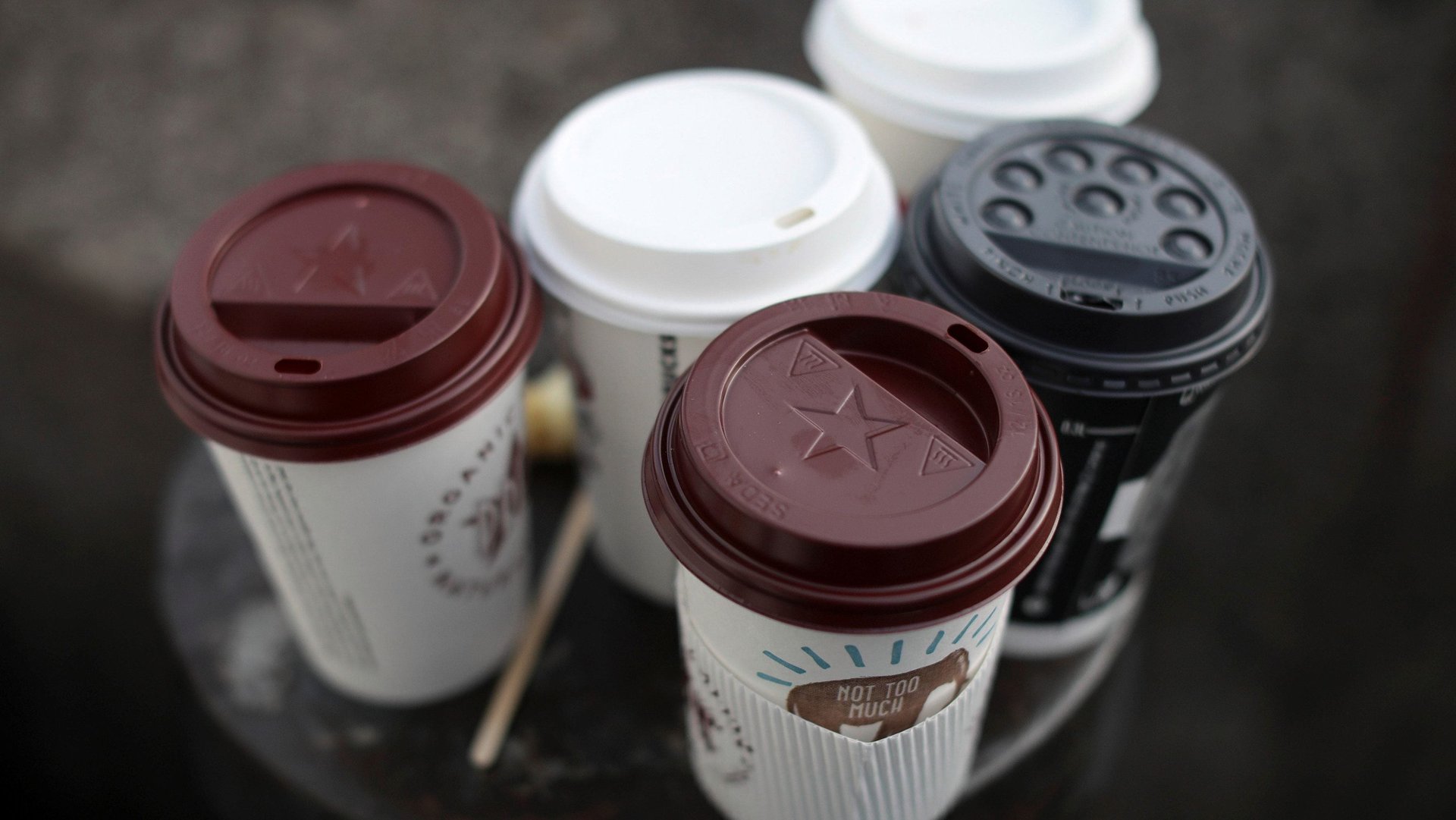Americans’ coffee habit is clogging landfills with millions of coffee cups each year
Breakfast in America doesn’t look like it used to. Among other big changes in the American diet, consumption of breakfast cereal, orange juice, and dairy milk are all the decline, thanks to on-the-go options like breakfast bars and the Greek yogurt explosion. But there’s one morning staple that hasn’t just held its ground, but has steadily become even more popular over the past decade, and that’s coffee.


Breakfast in America doesn’t look like it used to. Among other big changes in the American diet, consumption of breakfast cereal, orange juice, and dairy milk are all the decline, thanks to on-the-go options like breakfast bars and the Greek yogurt explosion. But there’s one morning staple that hasn’t just held its ground, but has steadily become even more popular over the past decade, and that’s coffee.
Whether it’s the sheer number of coffee shops and coffee drinks now available, coffee’s status as an “affordable luxury“, or a crutch for the one-third of us who regularly miss out on adequate sleep, we drinking more java than ever. A study from the National Coffee Association found that our gallons-per-capita consumption kept rising past 2015 (the last year for which USDA data was available) and predicted that by the end of 2018 we’ll all be drinking 26.8 gallons each.
The good news is that caffeine seems to be safe, and unlike soda or juice, black coffee—we’re not talking about any drink topped with whipped cream or that has caramel in the name—has very few calories. If you’re taking it to go however, your cup of joe does come without consequence—the endless disposable cups that feed the ravenous waste stream. Hot to go cup use has increased significantly over the past decade, along with the plastic lids that almost always top them. And that’s not even getting into cups and lids designed for iced coffee drinks, and their ocean-clogging straws.
The new breed of travel mug works almost as well for iced drinks as for hot, and keeps them cold longer than a thin plastic cup. As of yet, none are available in a 26-gallon size, but soon you will be able to invest in an earth-friendly metal straw for your keychain.
An earlier version of this story said that hot coffee cups are biodegradable. Most are not.